Not to be missed in Rimini: the historic city
Here’s what to do if the weather isn’t nice
If you don’t feel like going to the beach because the day is gray, here’s what to do and see in Rimini.
With the directions from our online tourist map, you’ll explore the historic center filled with art and culture in Rimini, all things not to be missed.
What to visit
A captivating day as Rimini is not just about beach and sea.
We will visit Piazza Tre Martiri, the Malatesta Temple, the covered market, Piazza Cavour, Sigismondo Castle, the Surgeon’s Domus, cross the Tiberius Bridge, and the ancient fishing village of Borgo San Giuliano.
Let’s wear comfortable shoes and set out to discover these wonderful and unique places.
The 2.5 km route is also suitable for children.
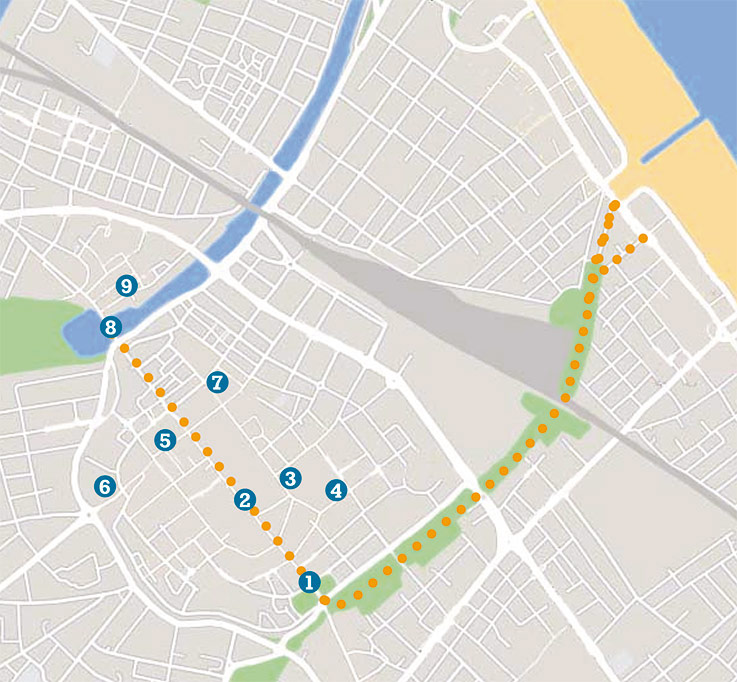

We start from Viale Bengasi or Viale Medaglie d’Oro, from here we immerse ourselves in the greenery of Renzi Park where we can appreciate tranquility away from the city.
Exiting the park, we find ourselves in front of the Arch of Augustus which will lead us to conquer the historic center.
Arch of Augustus
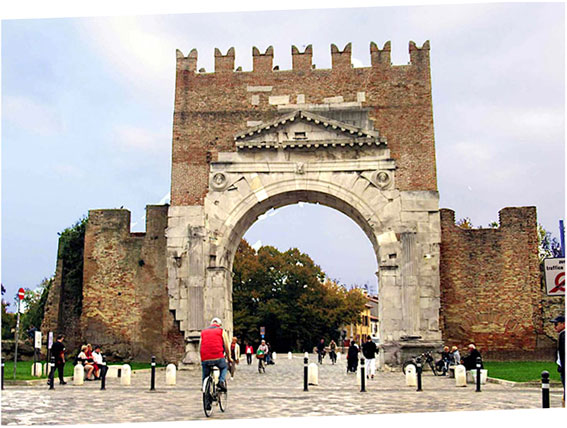
1) It is the oldest preserved arch in Northern Italy, inviting entrance to the city. An honorary arch erected in 27 BC by the Senate to celebrate Augustus Octavian, the first Roman emperor.
Piazza Tre Martiri
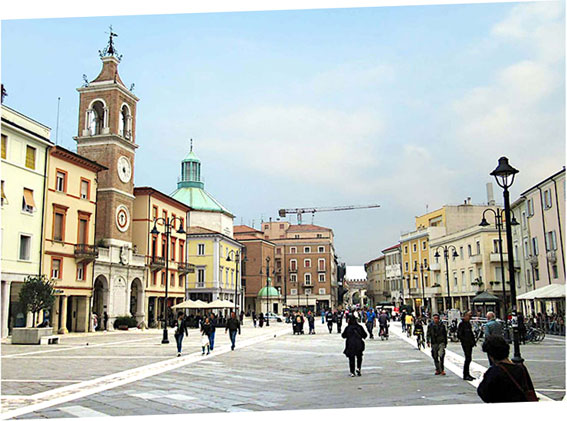
2) Beyond the Arch of Augustus, we continue along the avenue and reach Piazza Tre Martiri. The square takes its name from three young partisans who were executed here in 1944. In the center stands a column commemorating Julius Caesar, who, standing on a stone after rallying his soldiers, uttered the phrase: “The die is cast” (a saying used when an important decision is made). Here you can also find the statue dedicated to him and the Clock Tower from 1547.
Malatesta Temple by Leon Battista Alberti
3) In Via 4 Novembre, we find the Malatesta Temple, transformed as it appears today by Sigismondo Pandolfo Malatesta around the mid-1400s.
The marble cladding of the six side chapels was the work of Matteo de Pasti and Agostino di Duccio. The fresco with the prince kneeling before Sigismondo, found in the last chapel on the right, is by Piero della Francesca. The crucifix painted in tempera and gold on wood is a remarkable masterpiece by Giotto.
Covered Market of Rimini
4) Nearby is the large covered market, open every day from 7:00 am to 7:45 pm except on Sundays.
Piazza Cavour
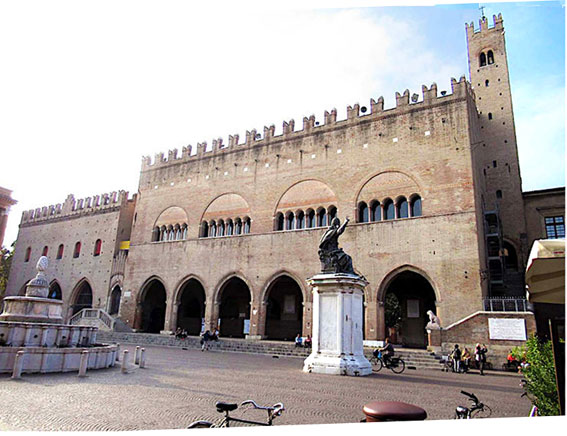
5) Five minutes’ walk from the Malatesta Temple leads you to Piazza Cavour. Here stands the Palazzo del Podestà, a remarkable medieval monument with its frontal arches dating back to 1334. It is said that from the central arch hung a rope to which criminals guilty of crimes were hanged. Other historic palaces surround this historically rich square, where the Fountain of the Pine Cone also stands.
In front of these ancient palaces stands the old fish market from 1747. It is surrounded on two sides by a colonnade with marble arches. Inside are long marble counters that were used to display the fish. At the four corners are fountains with dolphins, used for cleaning the fish. This noteworthy work is by the architect Giovan Francesco Buonamici.
In this square and the surrounding areas, the largest market in the region takes place.
Market days are Wednesday and Saturday mornings until 1:00 PM.
Sismondo Castle or Malatesta Fortress
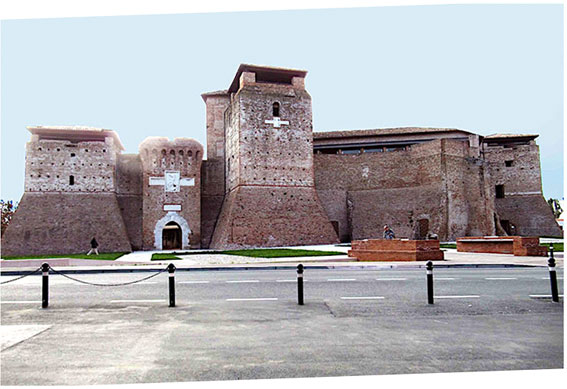
6) At the end of Piazza Cavour, we find the fortress-residence of Sigismondo Pandolfo Malatesta, dating back to 1437. The castle is remarkably charming, with its large square towers, the surrounding walls, and the beautiful square that overlooks the castle, making this historically rich place a unique gem.
Surgeon’s Domus
7) After visiting the castle, we return to Piazza Cavour and walk along Corso Giovanni XXIII, which leads us to the Surgeon’s Domus. An archaeological area open to the public covering over 700 square meters. Of significant discovery is the Roman house of the surgeon, an imperial-age residence named after the profession of its last owner. The extraordinary find of more than 150 surgical instruments is exhibited in the nearby museum.
Tiberius Bridge
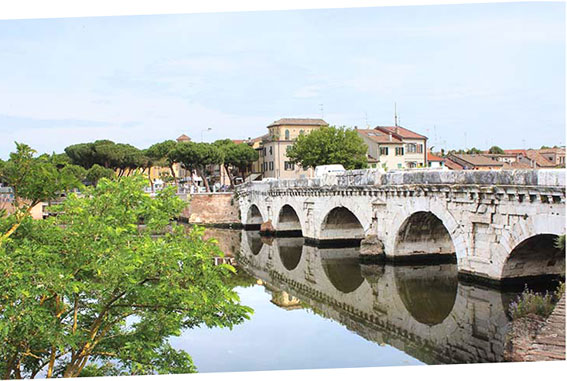
8) The Tiberius Bridge, of remarkable beauty, separates the historic center of Rimini from the picturesque Borgo San Giuliano. The stone bridge was initiated by Augustus and completed by Tiberius. It stretches for a length of 70 meters with five arches resting on massive pillars. The architectural design is celebrated for its harmony of forms. Not to be missed is the pedestrian walkway along the water’s edge of the basin. A floating walkway connects the docks from right to left of the ancient port, considered one of the most beautiful in the world.
Ancient Borgo San Giuliano
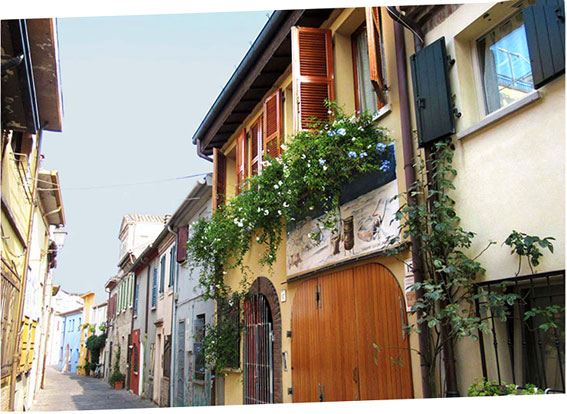
9) Beyond the Tiberio Bridge, on the other side of the road, lies the Ancient Borgo San Giuliano. Low fishermen’s cottages adorned with magnificent murals paying homage to Federico Fellini, one of the most famous directors in the history of Italian cinema, who is thus remembered in his hometown Borgo. The murals depict characters and scenes from his most important films. Restaurants and bars are available nearby for lunch breaks.

Rimini Aperitivo and Street Food Tour The Food Tour is a walking tour through the city centre and Borgo San Giuliano. BOOK.

